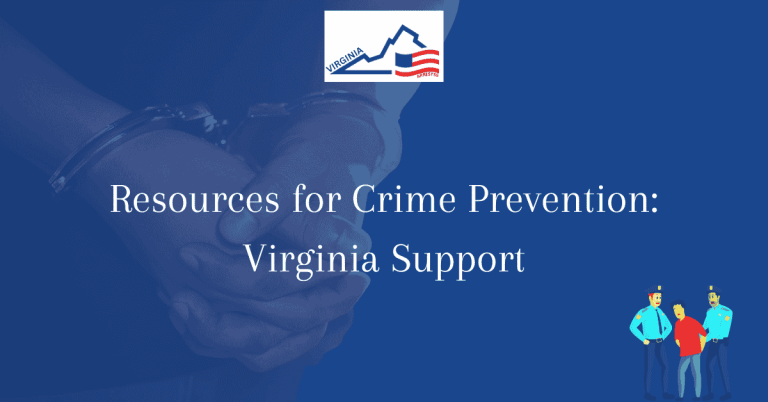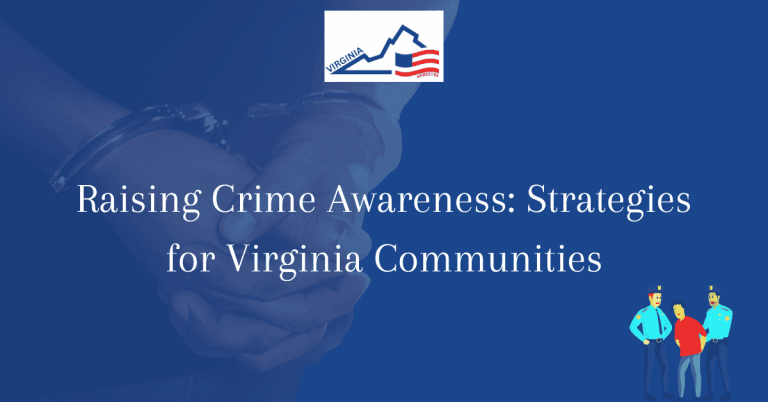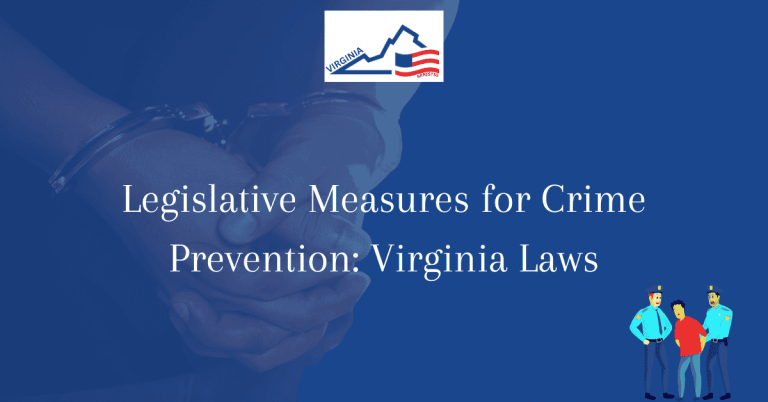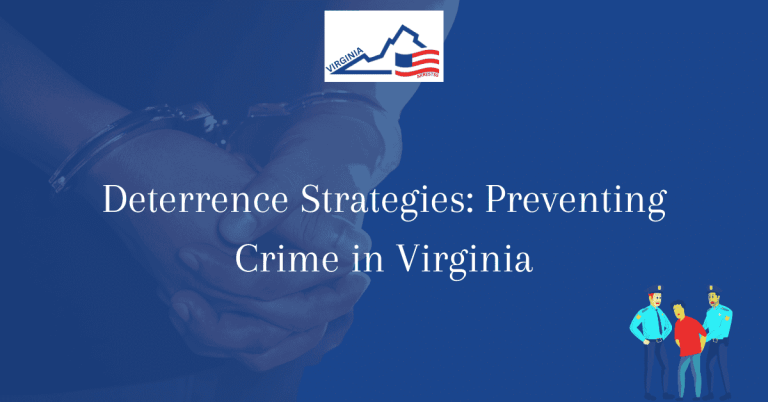Innovative Technologies for Crime Prevention: Virginia Advances
Innovative technologies are transforming the landscape of crime prevention in Virginia. These advancements are paving the way for a safer and more secure environment for residents and communities across the state. From cutting-edge surveillance systems to data analytics tools, Virginia is at the forefront of utilizing technology to combat crime effectively.
The integration of these innovative technologies is not only enhancing law enforcement efforts but also empowering communities to take an active role in crime prevention. By harnessing the power of technology, Virginia is making great strides in creating a safer and more secure future for all its residents. Stay tuned to learn more about the exciting developments in crime prevention technology in Virginia.
Advancements in Surveillance Systems
In recent years, the field of surveillance systems has seen significant advancements, particularly in the area of crime prevention. The integration of predictive analytics has revolutionized the way law enforcement agencies approach crime prevention strategies.
By utilizing predictive analytics, authorities can now anticipate criminal activities before they occur, allowing for proactive measures to be taken. This technology analyzes vast amounts of data to identify patterns and trends, enabling law enforcement to allocate resources effectively and prevent crimes from happening.
Utilizing Predictive Analytics for Crime Prevention
Predictive analytics play a crucial role in enhancing crime prevention efforts by providing insights into potential criminal behavior. By leveraging this technology, law enforcement agencies can identify high-risk areas and individuals, allowing them to intervene before crimes are committed.
Through the use of advanced algorithms and machine learning techniques, predictive analytics can forecast criminal activities with a high degree of accuracy. This proactive approach has proven to be effective in reducing crime rates and improving public safety.
Impact of Technology Integration on Crime Rates
The integration of technology in surveillance systems has had a significant impact on crime rates. By incorporating advanced tools and solutions, law enforcement agencies are better equipped to combat criminal activities and keep communities safe.
Technological advancements such as facial recognition software, drones, and CCTV cameras have proven to be valuable assets in crime prevention efforts. These tools enable authorities to monitor public spaces, gather evidence, and track suspects, ultimately leading to a reduction in crime rates.
Data-Driven Approaches in Law Enforcement
Data-driven approaches have become increasingly prevalent in law enforcement, particularly in the realm of crime prevention. By collecting and analyzing data effectively, authorities can gain valuable insights that inform their decision-making processes.
Through the use of data analytics, law enforcement agencies can identify crime hotspots, track criminal trends, and allocate resources strategically. This data-driven approach enhances the efficiency and effectiveness of crime prevention efforts, ultimately resulting in safer communities.
Virginia’s Commitment to Proactive Safety Measures
Virginia has emerged as a leader in adopting proactive safety measures through the integration of innovative technologies. The state’s commitment to leveraging cutting-edge solutions for crime prevention has set a precedent for other regions to follow.
By investing in advanced technologies and embracing data-driven approaches, Virginia has managed to create safer environments for its residents. The state’s proactive stance on safety measures has led to a decrease in crime rates and an overall improvement in public security.
Leading the Way in Innovative Technologies
Virginia has positioned itself as a frontrunner in adopting innovative technologies for crime prevention. By embracing emerging tools and solutions, the state has been able to stay ahead of evolving criminal threats and protect its citizens effectively.
From the implementation of smart surveillance systems to the use of artificial intelligence in law enforcement, Virginia continues to lead the way in leveraging technology for proactive safety measures. These innovative technologies have proven to be instrumental in reducing crime rates and enhancing public safety.
Creating Safer Environments through Technology
Technology has played a pivotal role in creating safer environments in Virginia. By harnessing the power of advanced solutions, law enforcement agencies have been able to deter criminal activities and respond swiftly to incidents.
The integration of technology has enabled authorities to monitor public spaces, analyze data in real-time, and collaborate effectively with other agencies. These efforts have resulted in the creation of safer communities where residents can feel secure and protected.
Future Prospects for Crime Prevention in Virginia
The future of crime prevention in Virginia looks promising, with ongoing advancements in technology paving the way for even more effective safety measures. As the state continues to invest in innovative solutions, the outlook for reducing crime rates and improving public security remains positive.
By embracing emerging technologies and staying ahead of criminal trends, Virginia is well-positioned to enhance its crime prevention efforts and safeguard its communities. With a commitment to proactive safety measures and the integration of cutting-edge tools, the state is poised to lead the way in innovative crime prevention strategies.
Frequently Asked Questions
Our Frequently Asked Questions section aims to provide detailed information on Innovative Technologies for Crime Prevention in Virginia. Explore the answers to common queries related to this topic.
What are some of the innovative technologies used for crime prevention in Virginia?
Virginia has implemented various innovative technologies for crime prevention, including predictive policing, gunshot detection systems, and surveillance cameras with facial recognition capabilities. These technologies help law enforcement agencies to proactively combat crime and enhance public safety.
How does predictive policing work in Virginia?
Predictive policing in Virginia involves the use of data analysis and algorithms to identify potential crime hotspots and patterns. Law enforcement agencies analyze historical data to predict where crimes are likely to occur, allowing them to deploy resources effectively and prevent criminal activities.
What is the role of gunshot detection systems in crime prevention?
Gunshot detection systems in Virginia use acoustic sensors to detect and locate gunshots in real-time. These systems help law enforcement agencies to respond swiftly to shooting incidents, gather evidence, and apprehend suspects. By leveraging technology, Virginia aims to reduce gun violence and enhance community safety.
How is facial recognition technology utilized for crime prevention in Virginia?
Facial recognition technology in Virginia enables law enforcement agencies to identify individuals of interest by analyzing facial features captured by surveillance cameras. This technology helps to track and apprehend suspects, locate missing persons, and enhance overall security measures. However, concerns regarding privacy and accuracy have led to ongoing debates about its ethical implications.
What are the benefits of using drones for law enforcement purposes in Virginia?
Drones have become valuable tools for law enforcement agencies in Virginia, allowing them to conduct aerial surveillance, search and rescue operations, and traffic monitoring. These unmanned aerial vehicles enhance situational awareness, aid in criminal investigations, and improve response times to emergencies. However, strict regulations govern their use to ensure compliance with privacy laws and safety standards.
How does data analytics contribute to crime prevention efforts in Virginia?
Data analytics play a crucial role in crime prevention strategies in Virginia by enabling law enforcement agencies to analyze vast amounts of data to detect patterns, trends, and anomalies. By leveraging predictive analytics, agencies can anticipate criminal activities, allocate resources efficiently, and prioritize preventive measures. Data-driven approaches empower law enforcement personnel to make informed decisions and enhance public safety outcomes.







